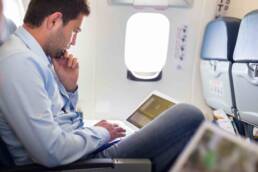Back in March, the United States banned passengers from carrying laptops onboard U.S.-bound flights from certain airports in the Middle East and North Africa. Four months later, the controversial travel restrictions have been lifted.
Why did the Trump Administration impose the laptop ban? The United States was not the only country to place specific travel restrictions on Middle East carriers. The United Kingdom imposed an almost identical ban. The U.K. policy targeted six countries and barred all electronic devices measuring more than 16 cm in length, 9.3 cm in width, or 1.5 cm in depth from the cabin of affected planes … but why? Both countries cite intelligence concerns. They point to a new terror threat in the form of tiny, hidden explosives. Intelligence reports indicate that Islamist terror groups have developed a new technique to hide a bomb inside the battery compartment of electronic devices.
Could this actually happen? In February 2016, a member of the militant Islamist organization al-Shabaab, an Al-Qaeda affiliate, smuggled one of these devices onto a Somali passenger jet. A sophisticated explosive device was built into a laptop computer and passed through airport security, including an X-ray machine, without suspicion. The device was detonated and blew a hole in the side of the aircraft. Thankfully, the plane was able to land and only minor injuries were reported. Experts believe that if the plane had reached cruising altitude, however, the blast would have triggered a secondary explosion in the fuel tank resulting in catastrophic loss of life.
Why did the U.S. lift the travel restrictions? The laptop ban was sharply criticized and industry leaders labeled it ineffective. They argued that militants could simply avoid the restrictions by flying from countries where the ban did not apply. That argument seems to fall short. The main objective was to prevent terrorist organizations from smuggling explosive devices onto planes. To accomplish this, airport and airline security measures needed to adapt to the growing threat. This is what the laptop ban set out to do. It put pressure on the aviation industry to beef up security. The 10 affected airports responded through enhanced passenger screening, increased security protocols around aircrafts and in passenger areas, and expanded canine screening. The ban was only lifted after U.S. officials visited these airports to confirm the new security measures.
If you are interested in traveling to the U.S., please contact our office to explore your options today!
Ready to have Berardi on your side?
Whether you’re a business looking to hire or a professional hoping to relocate, immigration law can be complicated. But you don’t have to do it alone. Put our experience to work for you.


